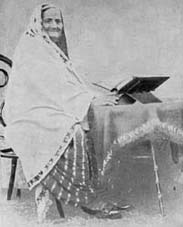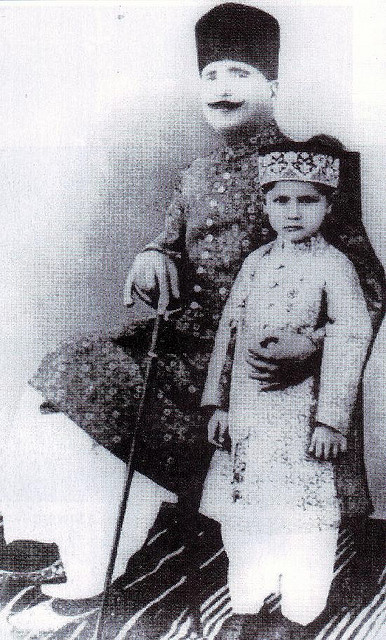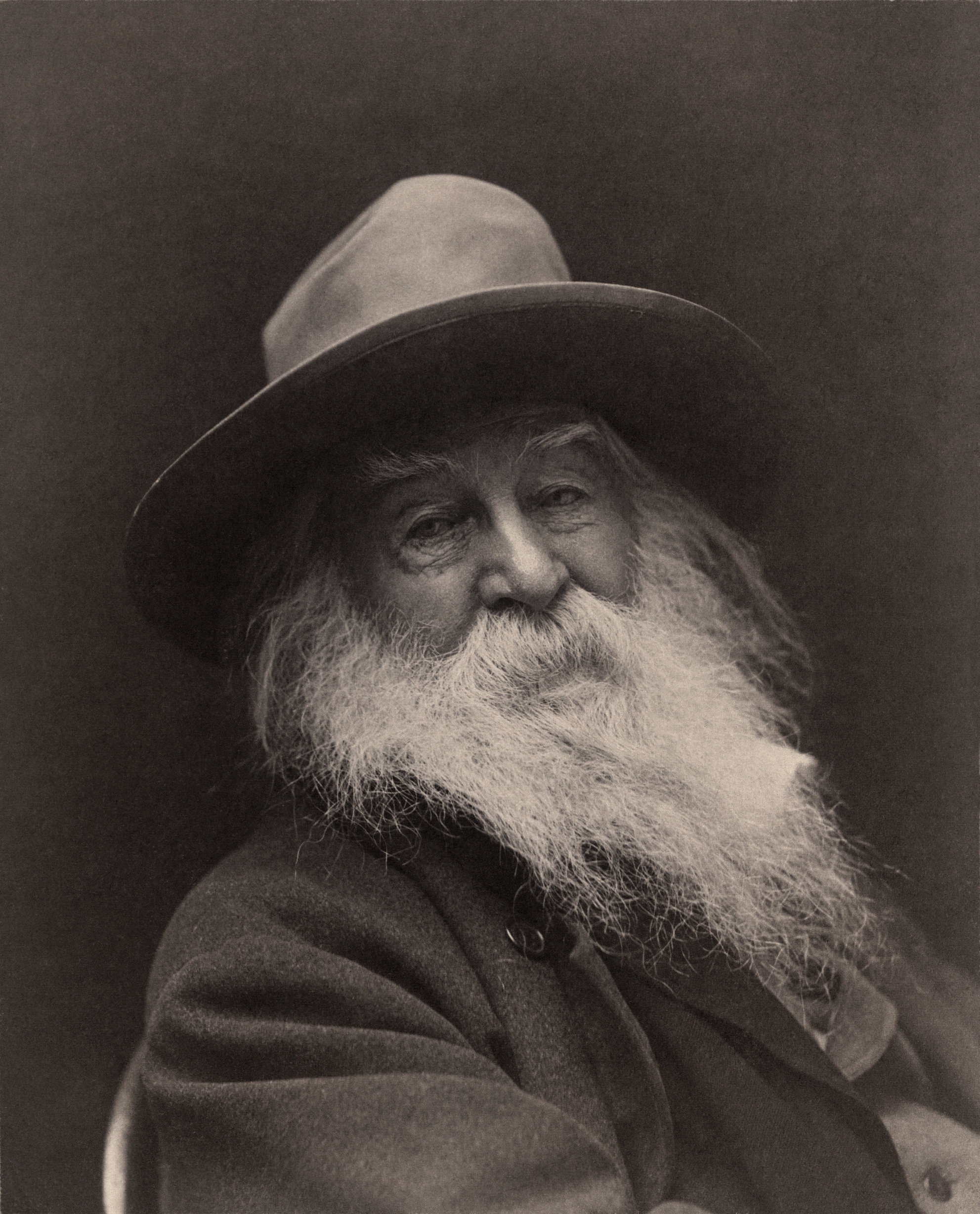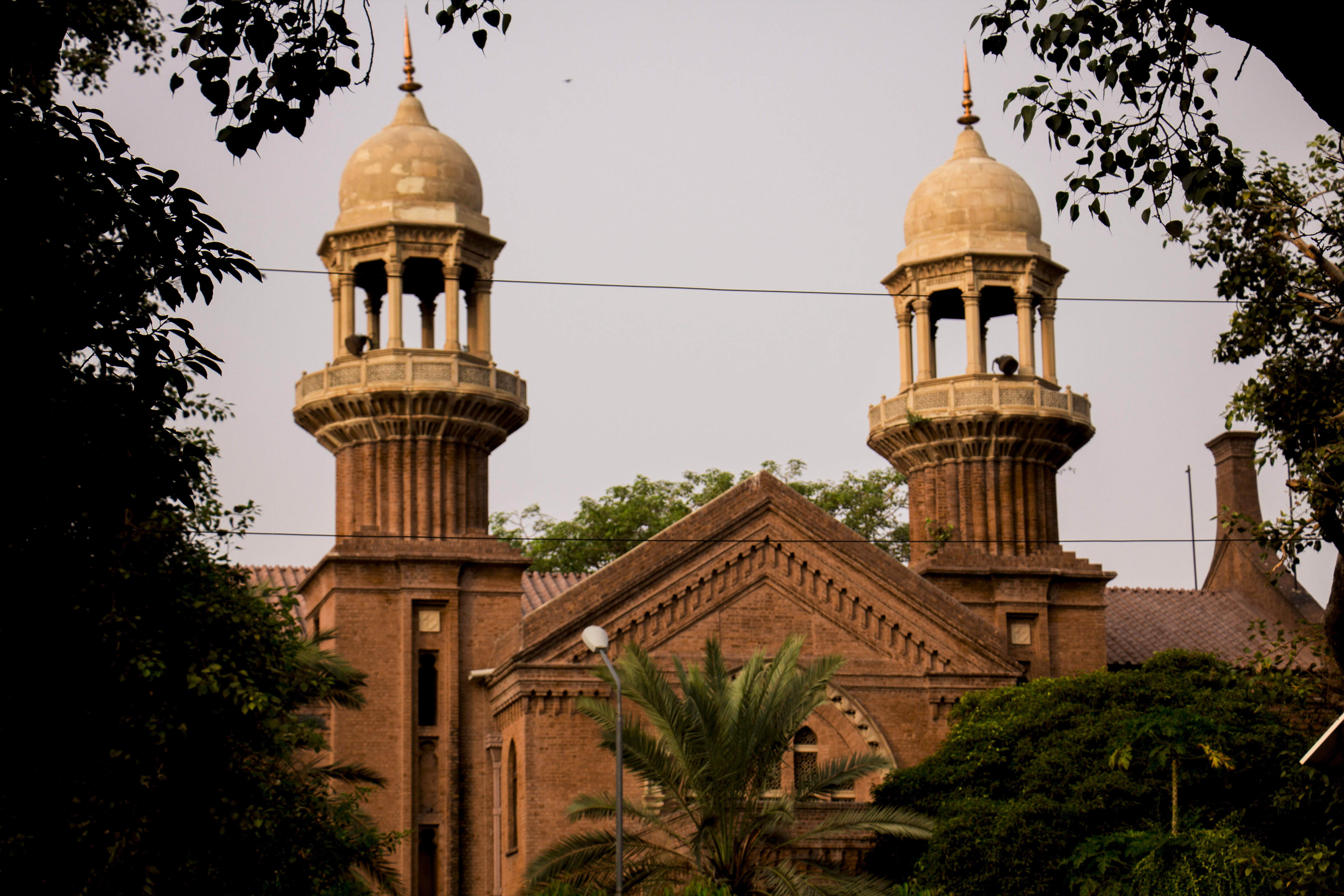|
Javed Manzil
The Javed Manzil or the Allama Iqbal Museum is a monument and museum in Lahore, Pakistan. Muhammad Iqbal lived there for three years, and died there. It was listed as a Tentative UNESCO site, and was protected under the Punjab Antiquities Act of 1975, and declared a Pakistani national monument in 1977. In honour of Iqbal, a Pakistani national poet, it was converted into a museum, inaugurated in December 1984. Location The museum is located on the Allama Iqbal Road (previously known as Mayo Road) in Lahore, Punjab, Pakistan. Construction The building's construction was undertaken by Iqbal, to serve as his residence. The building was European in style and was completed in 1935. The cost of construction was 42,025 British Indian Rupees. The site was built on a plot purchased by Iqbal in 1934 for Rs. 25,025, covering an area of 7 kanals, . Iqbal named the residence "Javed Manzil" after his son Javid Iqbal. Of all Iqbal's residences in Lahore, only the Javed Manzil belonged to him ... [...More Info...] [...Related Items...] OR: [Wikipedia] [Google] [Baidu] |
Lahore
Lahore ( ; pnb, ; ur, ) is the second most populous city in Pakistan after Karachi and 26th most populous city in the world, with a population of over 13 million. It is the capital of the province of Punjab where it is the largest city. Lahore is one of Pakistan's major industrial and economic hubs, with an estimated GDP ( PPP) of $84 billion as of 2019. It is the largest city as well as the historic capital and cultural centre of the wider Punjab region,Lahore Cantonment globalsecurity.org and is one of Pakistan's most , progressiv ... [...More Info...] [...Related Items...] OR: [Wikipedia] [Google] [Baidu] |
Indian Rupee
The Indian rupee ( symbol: ₹; code: INR) is the official currency in the republic of India. The rupee is subdivided into 100 ''paise'' (singular: ''paisa''), though as of 2022, coins of denomination of 1 rupee are the lowest value in use whereas 2000 rupees is the highest. The issuance of the currency is controlled by the Reserve Bank of India. The Reserve Bank manages currency in India and derives its role in currency management on the basis of the Reserve Bank of India Act, 1934. Etymology The immediate precursor of the rupee is the ''rūpiya''—the silver coin weighing 178 grains minted in northern India by first Sher Shah Suri during his brief rule between 1540 and 1545 and adopted and standardized later by the Mughal Empire. The weight remained unchanged well beyond the end of the Mughals until the 20th century. Though Pāṇini mentions (), it is unclear whether he was referring to coinage. ''Arthashastra'', written by Chanakya, prime minister to the first Maurya ... [...More Info...] [...Related Items...] OR: [Wikipedia] [Google] [Baidu] |
Mohammad Iqbal
Sir Muhammad Iqbal ( ur, ; 9 November 187721 April 1938), was a South Asian Muslim writer, philosopher, Quote: "In Persian, ... he published six volumes of mainly long poems between 1915 and 1936, ... more or less complete works on philosophical themes" (p. xiii)" Scholar and politician, whose poetry in the Urdu language is considered among the greatest of the twentieth century, Quote: "In Urdu, Iqbal is allowed to have been far the greatest poet of this century, and by most critics to be the only equal of Ghalib (1797–1869). ... the Urdu poems, addressed to a real and familiar audience close at hand, have the merit of being direct, spontaneous utterances on tangible subjects. (p. xiii)" and whose vision of a cultural and political ideal for the Muslims of British-ruled India was to animate the impulse for Pakistan. He is commonly referred to by the honorific Allama (from ). Born and raised in Sialkot, Punjab in an ethnic Kashmiri Muslim family, Iqbal completed his B.A. ... [...More Info...] [...Related Items...] OR: [Wikipedia] [Google] [Baidu] |
Muhammad Iqbal
Sir Muhammad Iqbal ( ur, ; 9 November 187721 April 1938), was a South Asian Muslim writer, philosopher, Quote: "In Persian, ... he published six volumes of mainly long poems between 1915 and 1936, ... more or less complete works on philosophical themes" (p. xiii)" Scholar and politician, whose poetry in the Urdu language is considered among the greatest of the twentieth century, Quote: "In Urdu, Iqbal is allowed to have been far the greatest poet of this century, and by most critics to be the only equal of Ghalib (1797–1869). ... the Urdu poems, addressed to a real and familiar audience close at hand, have the merit of being direct, spontaneous utterances on tangible subjects. (p. xiii)" and whose vision of a cultural and political ideal for the Muslims of British Raj, British-ruled India was to animate the impulse for Pakistan. He is commonly referred to by the honorific Allama (from ). Born and raised in Sialkot, Punjab region, Punjab in an ethnic Kashmiri Muslims, Kash ... [...More Info...] [...Related Items...] OR: [Wikipedia] [Google] [Baidu] |
List Of National Poets
A national poet or national bard is a poet held by tradition and popular acclaim to represent the identity, beliefs and principles of a particular national culture. The national poet as culture hero is a long-standing symbol, to be distinguished from successive holders of a bureaucratically-appointed poet-laureate office. The idea and honoring of national poets emerged primarily during Romanticism, as a figure that helped consolidation of the nation states, as it provided validation of their ethno-linguistic groups. Most national poets are historic figures, though a few contemporary writers working in relatively new or revived national literatures are also considered "national poets." Though not formally elected, national poets play a role in shaping a country's understanding of itself. Some nations may have more than one national poet; the idea of a single one is always a simplification. It has been argued that a national poet "must write poetry that close ... [...More Info...] [...Related Items...] OR: [Wikipedia] [Google] [Baidu] |
Punjab, Pakistan
Punjab (; , ) is one of the four provinces of Pakistan. Located in central-eastern region of the country, Punjab is the second-largest province of Pakistan by land area and the largest province by population. It shares land borders with the Pakistani provinces of Khyber Pakhtunkhwa to the north-west, Balochistan to the south-west and Sindh to the south, as well as Islamabad Capital Territory to the north-west and Autonomous Territory of AJK to the north. It shares an International border with the Indian states of Rajasthan and Punjab to the east and Indian-administered Kashmir to the north-east. Punjab is the most fertile province of the country as River Indus and its four major tributaries Ravi, Jhelum, Chenab and Sutlej flow through it. The province forms the bulk of the transnational Punjab region, now divided among Pakistan and India. The provincial capital is Lahore — a cultural, modern, historical, economic, and cosmopolitan centre of Pakistan. Other major cities ... [...More Info...] [...Related Items...] OR: [Wikipedia] [Google] [Baidu] |
Kanal (unit)
A kanal is a unit of area used in Pakistan. Under British rule the marla and kanal were standardized so that the kanal equals exactly 605 square yards or ; this is roughly equivalent to 506 square metres. A kanal is equal to 20 marlas. See also * Marla (unit) A marla is a unit of area used in the Indian subcontinent. Description British raj standard marla The marla is a traditional unit of area that is used in India, Pakistan and Bangladesh. The marla was standardized under British raj to be equ ... References Units of area Customary units in India Pakistani culture {{measurement-stub ... [...More Info...] [...Related Items...] OR: [Wikipedia] [Google] [Baidu] |
Javed Iqbal (judge, Born 1924)
Senior Justice Javed Iqbal (Urdu: ; 5 October 1924 – 3 October 2015) was a Pakistani philosopher and senior justice of the Supreme Court of Pakistan. He was internationally known for his acclaimed publications on philosophy of law and modern Islamic philosophy in international and national journals. He was the son of the poet-philosopher Muhammad Iqbal, who inspired the Pakistan Movement. Javed authored various books on Pakistan's nationalism movement and political ideology. Apart from philosophy, Javed had a prolific career in the Judiciary of Pakistan and was a former Chief Justice of the Lahore High Court before being elevated to the Supreme Court. Early life Javed Iqbal was born in Sialkot on 5 October 1924 to Allama Muhammad Iqbal and his second wife, Sardar Begum. His mother died when he was 11, and his father died in 1938 when he was 14. Javed Iqbal received the following educational degrees and distinctions: BA (Honors) degree in 1944 from the Government Co ... [...More Info...] [...Related Items...] OR: [Wikipedia] [Google] [Baidu] |
Dawn (newspaper)
''Dawn'' is a Pakistani English-language newspaper that was launched in British India in 1941. It is the largest English newspaper in Pakistan, and also serves as the country's newspaper of record. ''Dawn'' is the flagship publication of the Dawn Media Group, which also owns local radio station ''CityFM89'' as well as the marketing and media magazine ''Aurora''. Muhammad Ali Jinnah, Pakistan's founding father, launched the newspaper in Delhi on 26 October 1941, with the goal of establishing it as a mouthpiece for the All-India Muslim League. The first issue was printed at Latifi Press on 12 October 1942. Based in Karachi, it also maintains offices in Lahore and the capital city of Islamabad, in addition to having correspondents abroad. , it has a weekday circulation of over 109,000. The newspaper's current chief editor is Zaffar Abbas. History ''Dawn'' began as a weekly publication, based in New Delhi. Under the instruction of Jinnah, it became the official organ of the All ... [...More Info...] [...Related Items...] OR: [Wikipedia] [Google] [Baidu] |
Muhammad Zia-ul-Haq
General Muhammad Zia-ul-Haq HI, GCSJ, ร.ม.ภ, (Urdu: ; 12 August 1924 – 17 August 1988) was a Pakistani four-star general and politician who became the sixth President of Pakistan following a coup and declaration of martial law in 1977. Zia served in office until his death in a plane crash in 1988. He remains the country's longest-serving ''de facto'' head of state and Chief of Army Staff. Educated at St. Stephen's College, Delhi , Zia was commissioned in the British Indian Army in the Guides Cavalry on 12 May 1943 after graduating from the Officer Training School (OTS) Mhow as British Army Officer and fought against Japanese forces in World War II in Burma and Malaya, before opting for Pakistan in 1947. He fought as a tank commander in the Indo-Pakistani War of 1965. In 1970, he led a military training mission to Jordan, proving instrumental to defeating the Black September insurgency against King Hussein. In recognition, Prime Minister Zulfikar Ali Bh ... [...More Info...] [...Related Items...] OR: [Wikipedia] [Google] [Baidu] |
Minar-e-Pakistan
Minar E Pakistan ( ur, , literally "Tower of Pakistan") is a tower located in Lahore, Pakistan. The tower was built between 1960 and 1968 on the site where the All-India Muslim League passed the Lahore Resolution (which was later called the Pakistan Resolution) on 23 March 1940 - the first official call for a separate and independent homeland for the Muslims of British India, as espoused by the two-nation theory. The resolution eventually helped lead to the emergence of an independent Pakistani state in 1947. The tower is located in the middle of an urban park, called the Greater Iqbal Park. Design The tower reflects a blend of Mughal/Islamic and modern architecture. The tower was designed and supervised by, Nasreddin Murat-Khan, a Russian-born Pakistani architect and civil engineer. The minaret provides a panoramic view to visitors who can access the top by climbing up the stairs or by means of an elevator. The tower base is shaped like a flower. The area surrounding the m ... [...More Info...] [...Related Items...] OR: [Wikipedia] [Google] [Baidu] |
History Of Pakistan
The history of preceding the country's independence in 1947 is shared with that of Afghanistan, India, and Iran. Spanning the western expanse of the Indian subcontinent and the eastern borderlands of the Iranian plateau, the region of present-day Pakistan served both as the fertile ground of a major civilization and as the gateway of South Asia to Central Asia and the Near East. Quote: "Numerous passageways through the northwestern frontiers of the Indian subcontinent in modern Pakistan and Afghanistan served as migration routes to South Asia from the Iranian plateau and the Central Asian steppes. Prehistoric and protohistoric exchanges across the Hindu Kush, Karakoram, and Himalaya ranges demonstrate earlier precedents for routes through the high mountain passes and river valleys in later historical periods. Typological similarities between Northern Neolithic sites in Kashmir and Swat and sites in the Tibetan plateau and northern China show that 'Mountain chains have often i ... [...More Info...] [...Related Items...] OR: [Wikipedia] [Google] [Baidu] |







